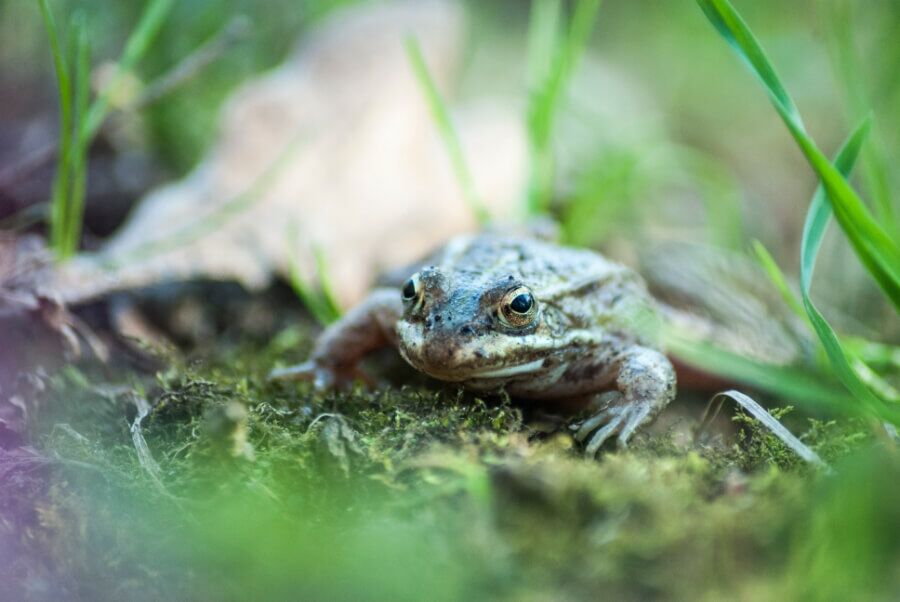Bizarre food: are frogs legs really French?
Spicy Adventures
Your cart is empty.
SUBTOTAL
£0.00

Spicy Adventures
For as long as any of us living beings can remember, frogs legs have always been synonymous with French cuisine. You can’t go to Paris without trying frogs legs. Oh no. It just wouldn’t be the full Paris experience. Simmered in bubbling froths, doused in sauces of garlic and wine or fried on the grill before being seasoned with ginger, garlic, onion, and pepper, frogs legs (cuisses de grenouille) can be found throughout France. Indeed, since the 18th century the French have even been referred to by the derogatory nickname of ‘frogs’. Charming.
For those who haven’t yet had the pleasure of tasting this infamous delicacy, the taste is judged favourably as something close to chicken (chefs won’t appreciate you describing it as such). It’s a mild flavour and a texture that’s very similar to chicken wings. Out of all the countless hundreds and thousands of amazing dishes within the ecosystem of French cuisine, why is it that frogs legs are so revered, standing out above the rest? Surely, it must’ve been French from the very start, no?
Well, whether you love them or hate them, it turns out that in terms of being an edible food, frogs legs have actually been served on dinner tables around the world a lot longer than you might’ve suspected. Frog legs, it transpires, are not French at all.
In fact, just recently, archaeologists discovered the remains of a small amphibian at an ancient site in Wiltshire, England. It was very clear that this little frog had been cooked in some way and, when analysis and results came back, it was found that this frog was 10,000 years old! This is a long time before the first documentation of the French eating frogs legs (more on that later).

The earliest records of humans eating frogs legs date back to the first century AD where they were commonly used throughout southern China! With the Wiltshire discovery, experts are not so surprised as you may be. It’s thought that hunter-gatherer tribes would have eaten small animals such as frogs, toads, lizards and whatever else they could find. They would have been a convenient source of protein – one that was readily available, tasted good and didn’t take much work to prepare or cook.
In China today, frogs legs are still high on the menu – particularly Cantonese cuisine where they are stir-fried or added to congee (a type of rice porridge). If you take the time to trawl through and study international cuisine, you’ll quickly realise that actually, frogs legs are far more popular than you ever imagined. You’ll find them being eaten in Italy, Slovenia, Croatia, Albania, Spain, Greece, Romania, the Caribbean as well as vast swathes of South East Asia, including Vietnam, Thailand, Cambodia and Indonesia.

Funnily enough, the French actually source all of their frogs legs from Indonesia now. In 1980, a country-wide ban was implemented on frog hunting in order to protect rapidly depleting stocks. Indonesia ships the frozen amphibians over to Europe regularly. They’re the number one exporter of frogs worldwide, actually. So overall, one could argue that it’s simply not fair to call frogs legs French at all. Regardless, the stereotype remains and it’s a universal truth that in this day and age, frogs legs are a real delicacy in France. So how did this happen?
Much later than the first records of frog leg eating, in the twelfth century AD, a large number of French monks were deemed to be growing rather large (yes, really). The Catholic church decided they had to take action and they ordered that the monks were to cut out meat from their daily diets. They were to become medieval vegans, trailblazing the way forwards for a meatless future.
However, these French monks were not stupid. They decided that frogs, being amphibians, qualified as fish. The catholic church had said nothing about eating fish so, what was the harm? The monks began to enjoy the delicacy of frogs legs. Not long after, religious French peasants (the vast majority of the French population at this time) picked up on the cuisine hack and followed the monks examples. As they say in France, ‘voilà’. A new national dish was born.

By the 1600’s, frogs legs were a real delicacy throughout France. You could find them in just about every worthy Parisian cafe and restaurant. It is, of course, these Parisian cafes and restaurants who, over the centuries, have turned frogs legs into a real, genuinely delicious delicacy. The French have always been very good at that. While they’re not to everyone’s tastes, frogs legs are here to stay. For example, did you know that it’s estimated we consume around 3.2 billion(!) frogs every single year? The only question left is, do you fancy one of them?

Understanding Spices
Spices have long been integral to the UK's culinary landscape, adding depth, flavours, and richness to a myriad of dishes. From the pungent aroma of cumin in Indian curries to...
Read MoreUnderstanding Spices
Confetti is an essential part of any wedding day. Not only is it a wonderful way to greet a newlywed couple, but it also provides some beautiful photo opportunities. The...
Read MoreSeasonal Ideas
It’s no secret that any handmade gift will always be more special than a store-bought one. Homemade food gifts are especially wonderful, a labour of love that shows someone you...
Read MoreHealth and Wellbeing
It’s no secret that winter’s cold and gloomy weather makes us crave indulgent dishes like fondue and baked goods like sticky toffee pudding and apple crumble. While Christmas is the...
Read More